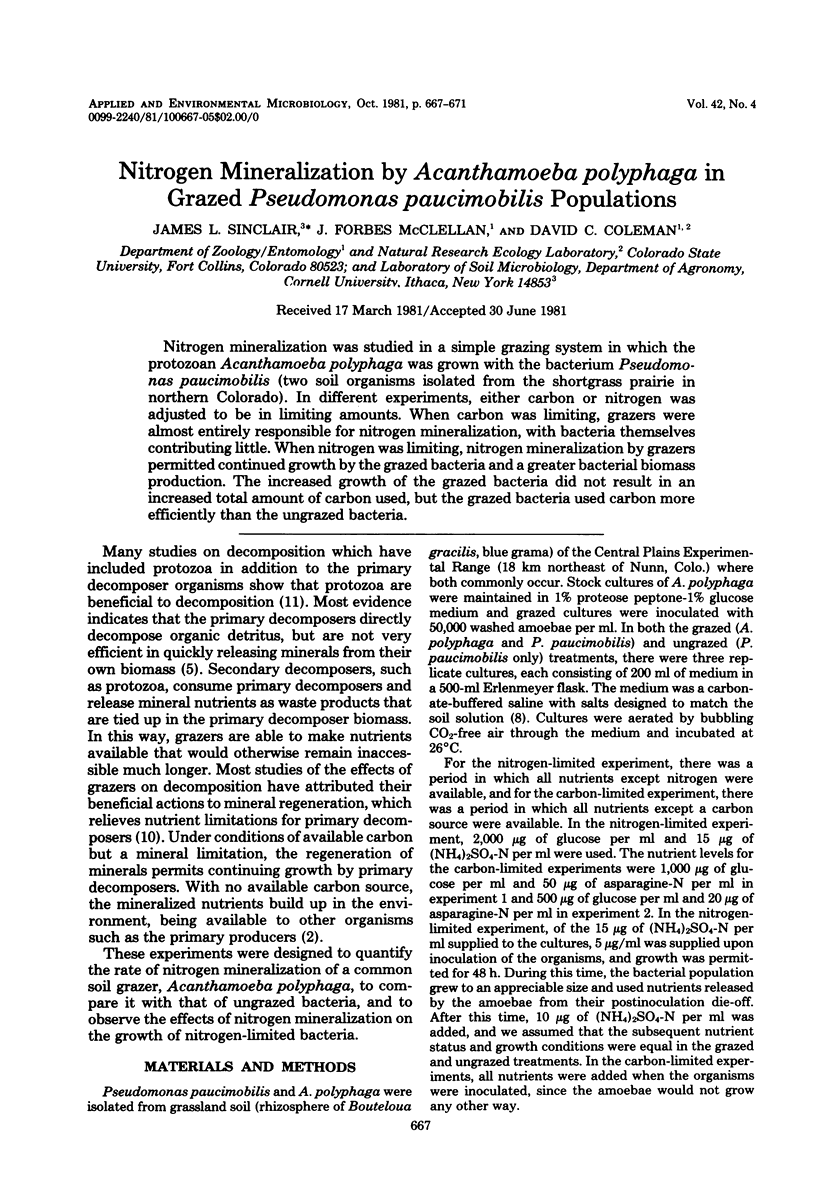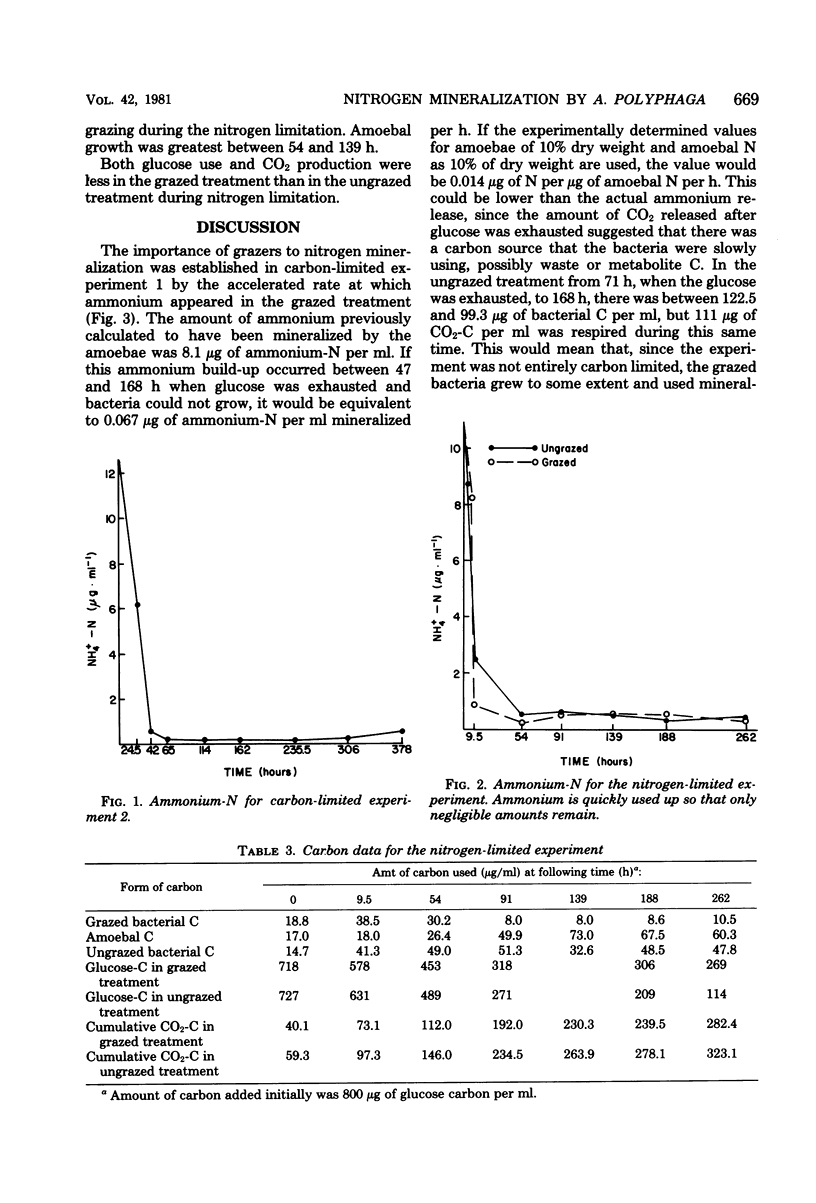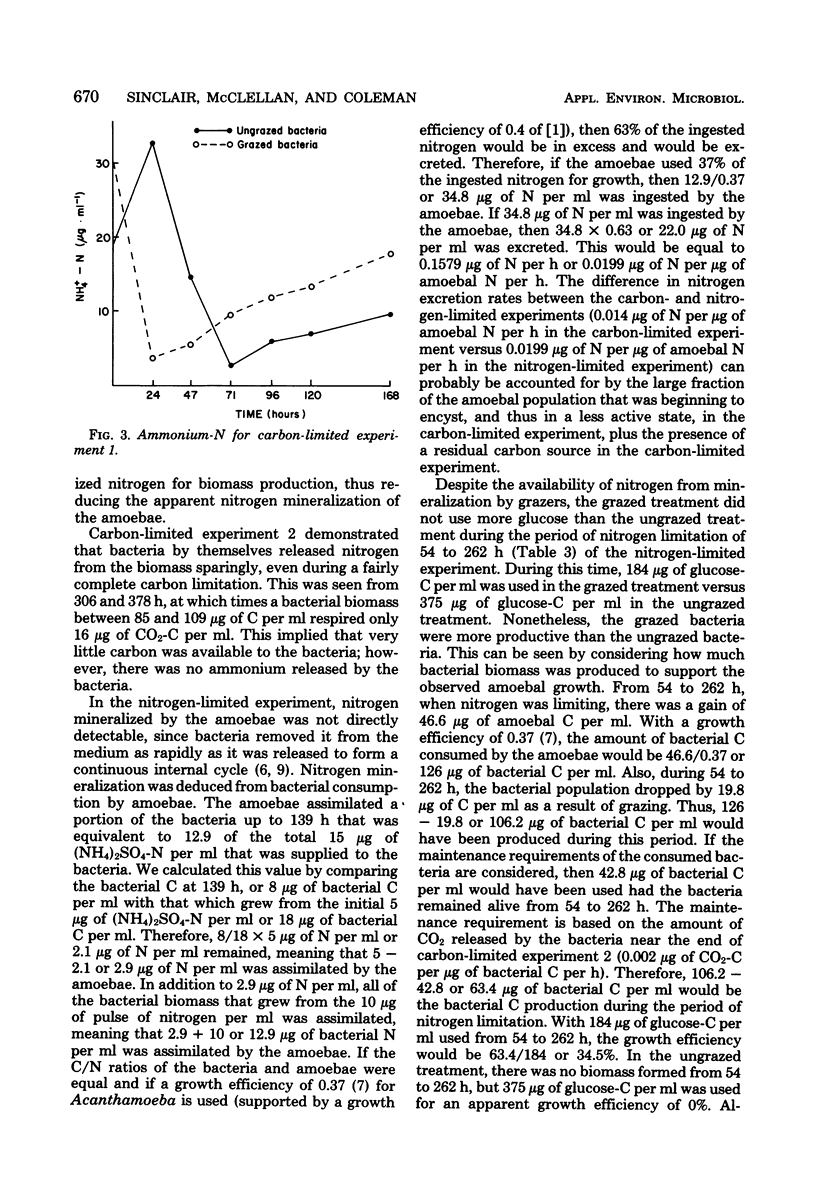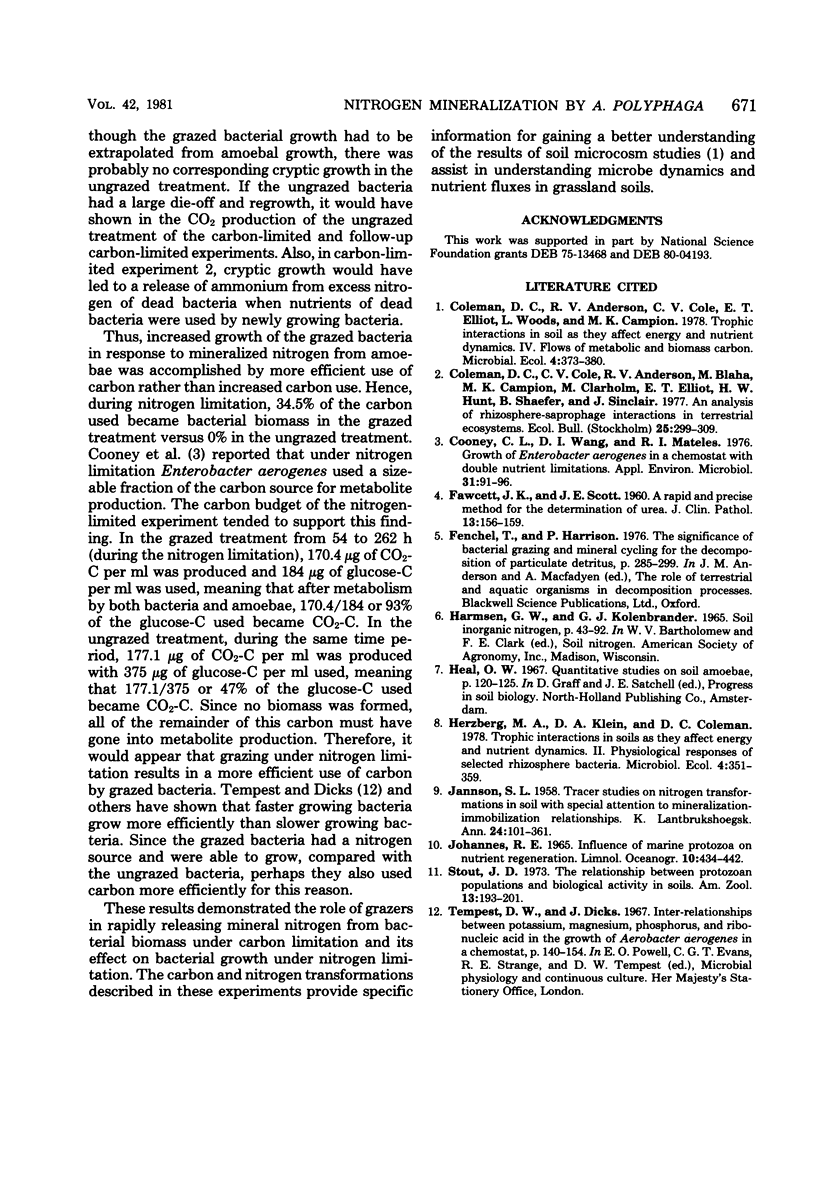Abstract
Nitrogen mineralization was studied in a simple grazing system in which the protozoan Acanthamoeba polyphaga was grown with the bacterium Pseudomonas paucimobilis (two soil organisms isolated from the shortgrass prairie in northern Colorado). In different experiments, either carbon or nitrogen was adjusted to be in limiting amounts. When carbon was limiting, grazers were almost entirely responsible for nitrogen mineralization, with bacteria themselves contributing little. When nitrogen was limiting, nitrogen mineralization by grazers permitted continued growth by the grazed bacteria and a greater bacterial biomass production. The increased growth of the grazed bacteria did not result in an increased total amount of carbon used, but the grazed bacteria used carbon more efficiently than the ungrazed bacteria.
Full text
PDF




Selected References
These references are in PubMed. This may not be the complete list of references from this article.
- Cooney C. L., Wang D. I., Mateles R. I. Growth of Enterobacter aerogenes in a chemostat with double nutrient limitations. Appl Environ Microbiol. 1976 Jan;31(1):91–98. doi: 10.1128/aem.31.1.91-98.1976. [DOI] [PMC free article] [PubMed] [Google Scholar]
- FAWCETT J. K., SCOTT J. E. A rapid and precise method for the determination of urea. J Clin Pathol. 1960 Mar;13:156–159. doi: 10.1136/jcp.13.2.156. [DOI] [PMC free article] [PubMed] [Google Scholar]


